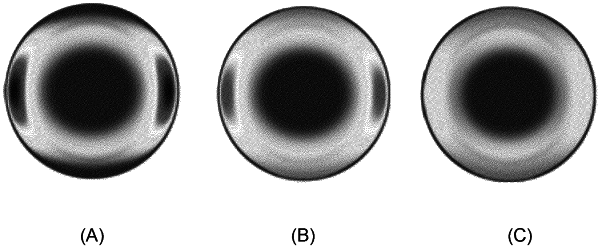| CPC G02C 7/048 (2013.01) [G02C 7/045 (2013.01); G02C 7/047 (2013.01); G02C 2202/08 (2013.01); G02C 2202/22 (2013.01)] | 13 Claims |

|
1. A method for optimizing comfort of a set of toric contact lenses, comprising:
providing a set of toric contact lenses for correcting patient vision needs across a predetermined range of cylinder powers, wherein said predetermined range of cylinder powers is divided into at least a lower cylinder power correction range and a higher cylinder power correction range;
wherein said set of toric contact lenses has a first stabilization zone design including at least one stabilization zone having a first thickness differential for all lenses within said lower cylinder correction range and a second stabilization zone design including at least one stabilization zone having a second thickness differential for all lenses within said higher cylinder correction range, and wherein the second thickness differential is greater than the first thickness differential; and
providing patients having a cylinder correction need within said lower cylinder power correction range a toric lens with said first stabilization zone design and providing patients having a cylinder correction need within said higher cylinder power correction range a toric lens with said second stabilization zone design.
|